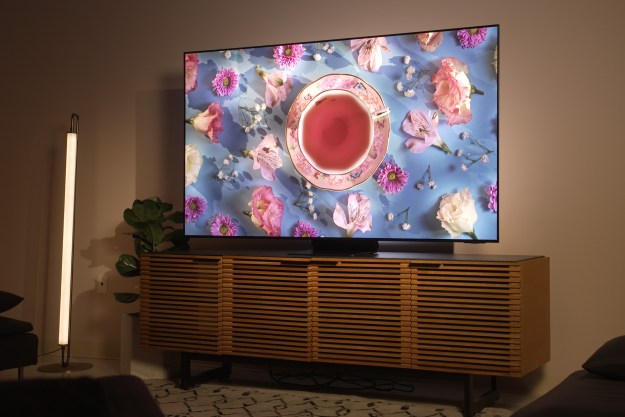If Sony is still considering spinning off its TV division, you wouldn’t know it by its rich display of new gear at CES 2015. During its predictably spectacular press conference today, Sony announced the thinnest 4K UHD LED/LCD TV it has ever made, along with some exciting news for Netflix 4K fans.
The X900C is an incredibly thin 4K UHD TV that’s been designed to appear as if it is floating, whether on its stand or mounted on the wall. The new model, like all Bravia 4K TVs, will run on the new Android TV platform, and grant access Netflix 4K, along with 4K content from Amazon Prime Instant Video and YouTube. The new set must be seen to be believed, so have a look in our video below.
Sony’s partnership with Netflix also continues to bear fruit. Today, Sony and Netflix announced that Netflix 4K streaming video will soon be available with HDR, or High Dynamic Range. High Dynamic Range brings much brighter images with improved contrast. HDR, combined with the expanded color gamut afforded by Sony’s Triluminous display panels (aka, quantum dots) the new Netflix 4K content stands to beat 4K UHD Blu-ray discs to the punch in bringing the next big thing in picture resolution and quality. Of course, the forthcoming disc-based format will be less compressed and, therefore, superior, but Netflix may be a more immediate and practical means to getting excellent 4K UHD content, and will likely enjoy a higher adoption rate.
There’s more news from Sony coming in the next few days, so check back with Digital Trends to keep up to date on the most exciting developments.
Editors' Recommendations
- Get $350 off this massive 85-inch Samsung QLED 4K TV
- Best Samsung TV deals: Save on 4K TVs, QLED TVs, OLED TVs, 8K TVs
- Best Buy just knocked $300 off this 85-inch Sony 4K TV
- Best TCL TV deals: 4K TVs as low as $150
- The best 4K TVs under $500: premium picture on a budget




